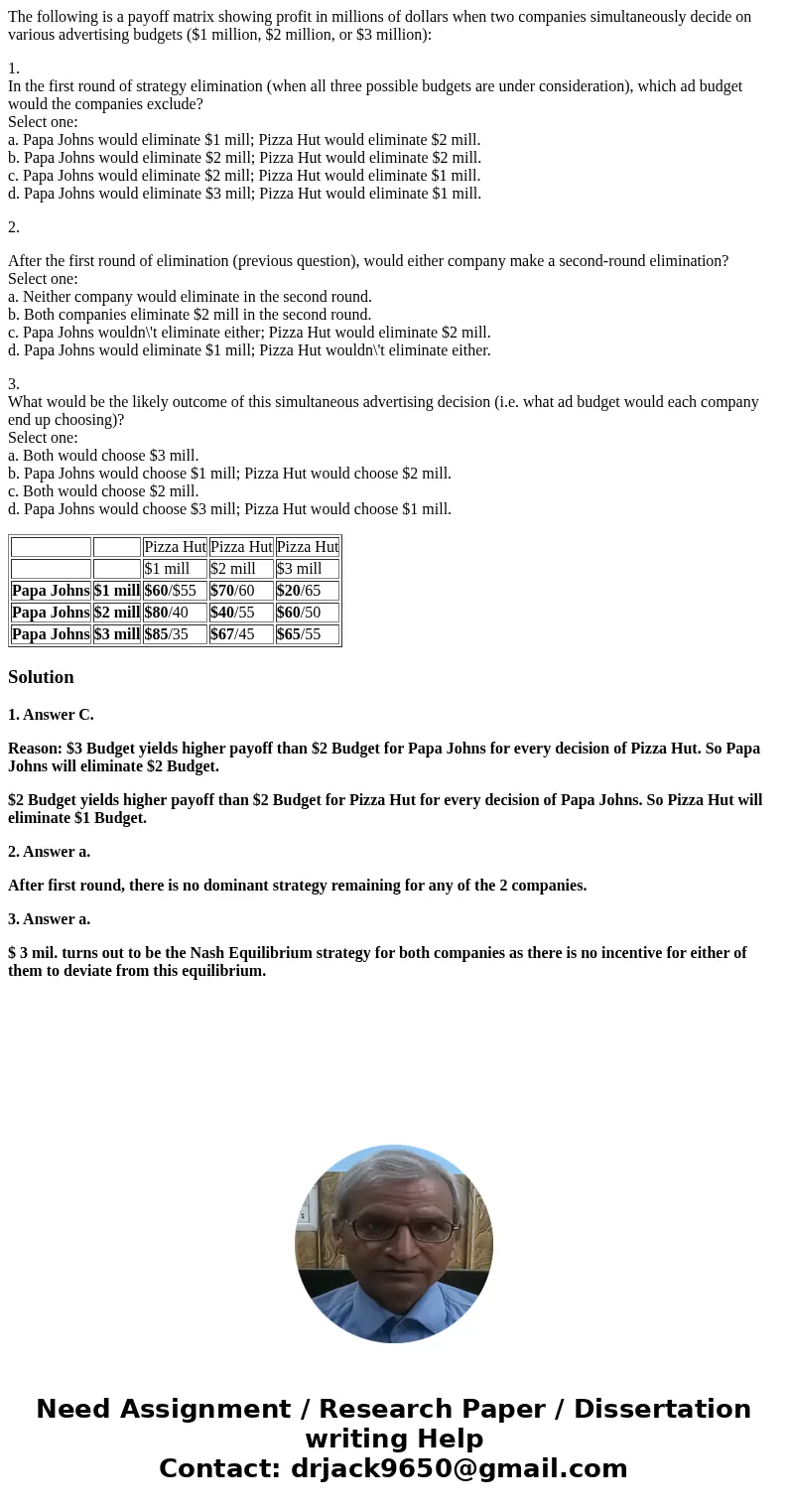The following is a payoff matrix showing profit in millions
The following is a payoff matrix showing profit in millions of dollars when two companies simultaneously decide on various advertising budgets ($1 million, $2 million, or $3 million):
1.
In the first round of strategy elimination (when all three possible budgets are under consideration), which ad budget would the companies exclude?
Select one:
a. Papa Johns would eliminate $1 mill; Pizza Hut would eliminate $2 mill.
b. Papa Johns would eliminate $2 mill; Pizza Hut would eliminate $2 mill.
c. Papa Johns would eliminate $2 mill; Pizza Hut would eliminate $1 mill.
d. Papa Johns would eliminate $3 mill; Pizza Hut would eliminate $1 mill.
2.
After the first round of elimination (previous question), would either company make a second-round elimination?
Select one:
a. Neither company would eliminate in the second round.
b. Both companies eliminate $2 mill in the second round.
c. Papa Johns wouldn\'t eliminate either; Pizza Hut would eliminate $2 mill.
d. Papa Johns would eliminate $1 mill; Pizza Hut wouldn\'t eliminate either.
3.
What would be the likely outcome of this simultaneous advertising decision (i.e. what ad budget would each company end up choosing)?
Select one:
a. Both would choose $3 mill.
b. Papa Johns would choose $1 mill; Pizza Hut would choose $2 mill.
c. Both would choose $2 mill.
d. Papa Johns would choose $3 mill; Pizza Hut would choose $1 mill.
| Pizza Hut | Pizza Hut | Pizza Hut | ||
| $1 mill | $2 mill | $3 mill | ||
| Papa Johns | $1 mill | $60/$55 | $70/60 | $20/65 |
| Papa Johns | $2 mill | $80/40 | $40/55 | $60/50 |
| Papa Johns | $3 mill | $85/35 | $67/45 | $65/55 |
Solution
1. Answer C.
Reason: $3 Budget yields higher payoff than $2 Budget for Papa Johns for every decision of Pizza Hut. So Papa Johns will eliminate $2 Budget.
$2 Budget yields higher payoff than $2 Budget for Pizza Hut for every decision of Papa Johns. So Pizza Hut will eliminate $1 Budget.
2. Answer a.
After first round, there is no dominant strategy remaining for any of the 2 companies.
3. Answer a.
$ 3 mil. turns out to be the Nash Equilibrium strategy for both companies as there is no incentive for either of them to deviate from this equilibrium.

 Homework Sourse
Homework Sourse